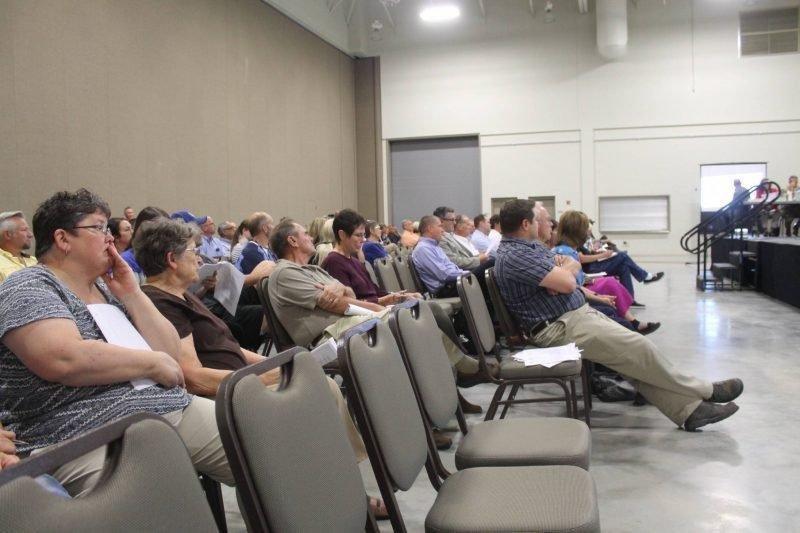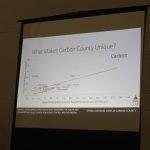In 2016, opioids were the number ninth cause of death. From 1999 to 2015, 25.9% of deaths in Carbon County were overdose related. From 2011 to 2016, that number rose to 51.4%. Of all Utah counties, Carbon County felt that opioid abuse was the most serious. These were just some of the facts and statistics presented at the Town Hall Opioid Discussion that took place on Monday evening at the Carbon County Events center.
A panel and committee were made of up familiar Utah faces such as Representative Christine Watkins, Representative Paul Ray, Karen Dolan of Four Corners and Debbie Marvidikis with the Southeast Utah Health Department. The evening began with speecges from three separate medical providers. The first, One Voice Recovery Founder Patrick Rezac, stated that his organization has been providing services in Carbon County since January of this year.
With many tests conducted, it was discovered that there was an overall positivity rate of Hepatitis C, with about 38% being in Carbon County. A large number of naloxone kits were distributed through the organization and the program allows for individuals to be seen where they are, whether that be at home or elsewhere. Rezac stated that he believes a fear of being arrested keeps individuals from reaching out for the help they need.
Danielle Pendergrass of Eastern Utah Women’s Health spoke next, stating that Carbon County is a very strong community and often comes together to work on programs. She then explained that in medicine, injuries are split in acute or chronic. Pendergrass then expressed that the opioid issue is chronic. She also stated that she believes it is currently being treated as acute and right now, what’s going on needs to be treated to plan for the chronic conditions.
Next was Steve Barth, who stated he was representing a new company based out of Utah that is working to put together an aggressive prevention plan before treatment. This plan will show real-time for opioid pills on when they are dispensed as well as pharmacy data without a gap. Currently, pharmacies are required to download and report data, but this new program will be able to implement that to real-time as well as when the medicine is taken or not taken.
The panelists were also given time to speak, touching on all things regarding the opioid epidemic. Naloxone was largely discussed. 11% of Carbon County residents have indicated the use of naloxone, while that number only rises to 19% in the entire state. It was also stated that there has been in increase from 2016 to 2018 in Carbon County residents pertaining to their knowledge in opioids, whether it be abuse, awareness or the like.
A decrease has also been seen from 2016 to 2017 in opioid deaths, as well as a decrease in heroin deaths. A lot of progress has been made, it was stated, but it will also take a long time to get to where it needs to be. Also expressed was the major need for the dialogue regarding opioids to change, as currently there is a large stigma of shame. Also concerning was the witnessing of addicts taking their pets to veterinarians in the hopes of having them prescribed an opioid.
Announced during the discussion was the Instead Opioid Solution Summit by the Utah Opioid Task Force. This summit, salted for Oct. 12 and 13, is under Mike Lee’s Utah Solutions program and will be two solid days to engage as many people in the state as people. The summit will take place in the Vivint Smart Home Arena in Salt Lake City. 10 to 15,000 across Utah are already expected to attend the summit.
The discussion ended with testimonials, questions and other personal stories from those in the crowd.










